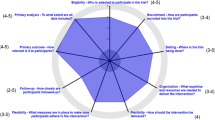Abstract
Objective: to describe the patterns of use of bupropion in daily clinical practice and factors which determine successful smoking cessation.Methods: Retrospective follow‐up study in 36 pharmacies in the Netherlands. Patients who received at least one prescription for bupropion between January and April, 2000 were included. The pharmacists noted several characteristics relating to the patient, use of bupropion and co‐medication. Patients were interviewed by telephone about their current and former smoking habits, the success of their smoking cessation and their experiences with bupropion.Main outcome measure: Abstinence rate and factors determining successful abstinence after six months.Results: 322 patients with a least one prescription for bupropion were identified. In 93.5% of patients bupropion was prescribed by the general practitioner. Half of the patients were dispensed 30 or fewer tablets. Pharmacists interviewed 215 (66.8%) patients by telephone. Of these patients 58 (27.0%) still did not smoke six months after the prescription for bupropion. The number of tablets used, lack of co‐morbidity, less than two previous attempts to stop smoking and private‐insurance were associated with a higher rate of successful abstinence. Conclusion: Most patients do not use bupropion in accordance with the recommended period and did not receive the same degree of additional support provided in clinical trials. Nevertheless 27.0% of patients reported to have stopped smoking six months after the prescription for bupropion. This self‐reported abstinence rate is only slightly lower than is reported in literature. This might be partly related to the fact that we did not validate smoking cessation by carbonmonoxide monitoring. Bupropion is not reimbursed in the Netherlands. It is difficult to assess whether patients' self‐payment has led to the selection of motivated patients, or has been a barrier to finishing using bupropion.
Similar content being viewed by others
References
Lancaster T, Stead L, Silagy C, Sowden A. Effectiveness of interventions to help people stop smoking: findings from the Cochrane Library. BMJ 2000; 321: 355–8.
Baillie AJ, Mattick RP, Hall W. Quitting smoking: estimation by meta-analysis of the rate of unaided smoking cessation. Aust J Public Health 1995; 19: 129–31.
Law M, Tang JL. An analysis of the effectiveness of interventions intended to help people stop smoking. Arch Intern Med 1995; 155: 1933–41.
Hughes JR, Stead LF, Lancaster T. Antidepressants for smoking cessation (Cochrane Review). Cochrane Database Syst Rev 2000; 4.
Hurt RD, Sachs DP, Glover ED, Offord KP, Johnston JA, Dale LC, et al. A comparison of sustained-release bupropion and placebo for smoking cessation. N Engl J Med 1997; 337: 1195–202.
Jorenby DE, Leischow SJ, Nides MA, Rennard SI, Johnston JA, Hughes AR et al. A controlled trial of sustained-release bupropion, a nicotine patch, or both for smoking cessation. N Engl J Med 1999; 340: 685–91.
Muir J, Lancaster T Fowler G, Neil A. Community based heart health promotion project in England. Self reporting overestimates smoking cessation rates. BMJ 1998; 316: 704–5.
Osler M, Gerdes LU, Davidsen M, Bronnum-Hansen H, Madsen M, Jorgensen T et al. Socioeconomic status and trends in risk factors for cardiovascular diseases in the Danish MONICA population, 1982–1992. J Epidemiol Commun Health 2000; 54: 108–13.
Crampton P, Salmond C, Woodward A, Reid P. Socioeconomic deprivation and ethnicity are both important for anti-tobacco health promotion. Health Educ Behav 2000; 27: 317–27.
Connor SK, McIntyre L. The sociodemographic predictors of smoking cessation among pregnant women in Canada. Can J Public Health 1999; 90: 352–5.
Cavelaars AE, Kunst AE, Geurts JJ, Crialesi R, Grotvedt L, Helmert U et al. Educational differences in smoking: international comparison. BMJ 2000; 320: 1102–7.
Pierce JP, Gilpin EA. Impact of over-the-counter sales on effectiveness of pharmaceutical aids for smoking cessation. JAMA 2002; 288: 1260–4.
Ward KD, Klesges RC, Zbikowski SM, Bliss RE, Garvey AJ. Gender differences in the outcome of an unaided smoking cessation attempt. Addict Behav 1997; 22: 521–33.
Wee CC, Rigotti NA, Davis RB, Phillips RS. Relationship between smoking and weight control efforts among adults in the united states. Arch Intern Med 2001; 161: 546–50.
Author information
Authors and Affiliations
Rights and permissions
About this article
Cite this article
Bouvy, M., Buurma, H. & Egberts, A. Determinants for successful smoking cessation with bupropion in daily practice. Pharm World Sci 25, 207–211 (2003). https://doi.org/10.1023/A:1025892031198
Issue Date:
DOI: https://doi.org/10.1023/A:1025892031198




